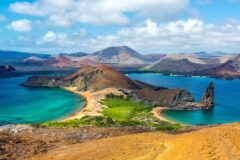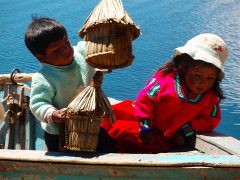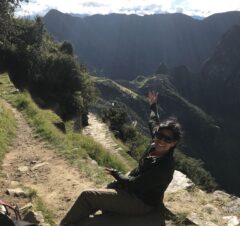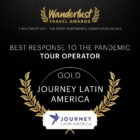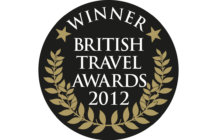Private Journeys
Argentina Wildlife: Tropical wetlands and Patagonia
12 days from £7,600pp
(based on two people sharing & excluding flights)
Essentials
-
Tour info
-
Country info
-
What's included
Tour info
Transport
4 flights (longest 3hrs); 4 scenic road journeys (longest 5hrs).
Accommodation
Most of the holiday is spent between our two carefully selected wildlife lodges in the Iberá Wetlands and Bahía Bustamente. As one would expect of such remote settings, both are rustic yet very comfortable. With unique locations, excellent hosts and an authentic feel, the accommodation is part of the attraction of this holiday. In Buenos Aires, you’ll stay at an upper-mid range hotel in an area handy for local restaurants, walking and sightseeing.
Meals
Breakfast in Buenos Aires, full board in the Iberá Wetlands and Bahia Bustamante.
Guides
We carefully select our local partners, some of whom we have worked with for over 25 years. Their English-speaking guides understand the expectations of our clients very well, and are consistently singled out for praise by the latter on their return.
Summary Of Nights
12 days, 11 nights: Buenos Aires 2; Iberá wetlands 3; Buenos Aires 1; Bahía Bustamente 4; Buenos Aires 1.
Currency
The unit of currency in Argentina is the Argentine peso.
Daily Spend
A budget of around US$50 per day should cover the cost of meals not included in the holiday itinerary, drinks and the odd souvenir. Eat at the best restaurants and you will pay considerably more.
How To Take It
For our latest currency advice for Argentina please see our FAQs section.
Tipping
Tips are expected and local guides often rely on their tip as a significant proportion of their income.
Most service industry workers will expect a tip of some kind and so it is useful to have spare change for hotel porters, taxi drivers and the like. It is common to leave 10 – 12% in restaurants.
Insurance
Travel insurance is essential.
Details of our recommended policy can be found on our Travel Insurance page.
Airport Taxes
If you have purchased your flights through Journey Latin America, the international departure tax is usually included in the ticket.
Journey Grade
Given the spectacular size of Argentina, there are large distances to cover on this holiday so for some journeys we have used domestic flights.
This holiday is suitable for all able, reasonably fit visitors with an interest in wildlife-spotting. If you are travelling alone or have a disability or other special requirement, please do call us.
Climate
Buenos Aires and the pampa plains have similar weather conditions – they are hottest January-March (very humid with tropical showers, occasionally over 40°C during the day). They can be cold and cloudy July-August, so weather conditions are best for a visit in spring and autumn.
In the Iberá wetlands most rain falls Oct-Apr. Temperatures range from 30°C in January down to 20°C in July. Wildlife can be viewed throughout the year but is more subdued in cooler days in winter (Jun-Aug). However, winter is the only time when sightings may occur of neo-tropical otter and yellow anaconda. Bird-watching is at its best Sep-Mar.
In Atlantic Patagonia wildlife is present throughout the year (sea-lions, elephant seals, dolphins, seabirds). Penguins congregate on the beaches Sept-Mar. Rain falls March-Jul when the temperature dips to 16°C from a high of up to 30°C in summer.
Clothing And Special Equipment
The southern hemisphere summer will be hot, therefore for Buenos Aires take loose-fitting light clothing for maximum comfort at this time. An umbrella is a good idea in case of a tropical shower. Spring and autumn are milder and less predictable.
The Iberá wetlands will be very hot and humid in summer, bring clothing appropriate to safari-style excursions including light trousers and shorts, short and long sleeved shirts (there may be insects) and a wide-brimmed hat. Bring mosquito repellant and sun block.
Appropriate day-to-day wear in Patagonia will vary a little according to season, temperatures range from chilly to hot but the wind often blows so a wind-proof layer will add to your comfort. In the southern winter bring some warm clothing including hat scarf and gloves; a light fleece jacket and a Gore-Tex outer shell is a good combination.
South America’s dress code is in informal in general and you won’t need clothes appropriate for formal dining but you may wish to take some smart casual wear for dining at the estancias or at top of the range restaurants.
Don’t forget your binoculars and a camera with a long lens and large capacity memory cards if you are interested in wildlife photography.
Please get in touch with the office before departure if you have any doubts.
Vaccinations
Preventative vaccinations are recommended against the following: typhoid; yellow fever; polio; tetanus; hepatitis A. You should consult your GP for specific requirements.
You can also find helpful information on the Masta Travel Health website.
Visas
Holders of a full British passport do not require a visa, although passports must be valid for at least 6 months after the trip begins. Anyone with a different nationality should enquire with us or check with the relevant consulate.
If flying to the US, or via the US you will need to fill in your online ESTA application.
Country info
When is the best time to visit Argentina?
Argentina is so large it’s always a good time to go somewhere. The southern hemisphere summer is the reverse of our own, with Dec-Feb being high summer in Patagonia. Spring (Oct-Nov) and Autumn (Mar-Apr) can still be very pleasant and are quieter. While summers in the lake district are reliably warm and sunny, the further south in Patagonia you go the more unpredictable the weather. In Winter (June-Sept) some hotels in Patagonia close, while others stay open for skiers. Buenos Aires, Mendoza and Córdoba enjoy a Mediterranean-type climate, with cool winters and very warm summers. North-west Argentina (Salta and Jujuy) enjoy sunshine and warm temperatures year-round but are influenced by altitude and the high Andes, with occasional cold snaps (June-Sept) and a rainy season (Jan-Feb). Iguazú Falls and Misiones has a subtropical climate, although it can be chilly July-Sept.
For more detailed information visit our When To Go section.
What is the official language of Argentina?
The official language of Argentina is Spanish.
What is Argentina's official currency?
The official currency of Argentina is the Argentine Peso.
Although cards have become more widely accepted, cash remains useful in Argentina so don’t rely solely on your cards. Taking funds in a mix of formats (a supply of US$ cash to convert into Pesos locally, along with your cards) is a sensible plan. In Buenos Aires and main tourist hubs you should have few problems paying by card but in more remote areas often only cash is accepted. You’ll also need cash for tips (eg if you pay for a restaurant meal with a card, tips are always left in cash). When changing money, denominations of US$50 and US$100 are usually preferred and you should make sure your notes are in perfect condition. Although ATMs are available, local ATM fees are high and the amount you can take out is lower than in the UK. We tend to avoid them.
We think it’s a good idea to keep an eye on Argentina’s exchange rates before you go. In addition to the official (BNA) rate of exchange for converting your US Dollars to Pesos, Argentina also uses a parallel exchange rate for foreign tourists (MEP). This is about 15% better than the official rate. Some casas de cambio will automatically apply the better tourist rate when changing your money. Others will only apply the official (BNA) rate. Rates used to process credit/debit card transactions can vary between card issuers, but you should find you get something between the official and tourist rates. Check your statement.
Try not to end up with a lot of leftover Pesos at the end of your time in Argentina, as it is difficult to change them to other currencies. You should be able to spend them at the Duty Free shop at Buenos Aires airport.
Please note that given the changeable situation with the Argentine economy, currency matters can change at short notice.
What's the time difference between Argentina and UK?
The time difference between Argentina and UK is GMT -3 hrs. Sometimes daylight saving is observed in the summer, from Sep/Oct to early Mar, but not every year.
Do I need a visa for Argentina?
Holders of a full British passport do not require a visa, although passports must be valid for at least 6 months after the trip begins. Anyone with a different nationality should enquire with us or check with the relevant consulate.
If flying to the US, or via the US you will need to fill in your online ESTA application.
What vaccinations do I need for Argentina?
Please check Travel Health Pro for information on health recommendations and vaccinations for the destinations you are visiting. Please note that many Latin American countries require proof of vaccination against Yellow Fever if you have recently travelled to another country where Yellow Fever is present.
Which other countries combine well with Argentina?
Chile, accessing the country by crossing the Andes over one of several scenic passes: from Salta in the northwest to the Atacama Desert, from Mendoza to Santiago, via the lakes crossing from Bariloche to Puerto Varas in the lake district and from El Calafate to Torres del Paine in Patagonia; Brazil, via the land crossing at Iguazú.
What are the festivals and other cultural or sporting events in Argentina?
• Tango Festival: Buenos Aires, August.
• Polo Open: Buenos Aires province, weekends in November.
• Gaucho Festivals: The pampas, early November.
How do I adapt to the altitude in Argentina?
Whilst a typical holiday in Patagonia presents no challenges with altitude, Argentina’s north-western provinces offer a taste of the high Andes with some spectacular road trips on offer. Travel to high altitude can cause mountain sickness and even if you feel fighting fit it’s important to take things easy and stay hydrated (drink plenty of water, avoiding alcohol and caffeine) as you get used to the thin, dry air. You may initially notice a headache, dizziness or breathlessness and this usually improves with acclimatisation. If you are pregnant or taking the contraceptive pill, have a medical condition such as heart or lung condition, anaemia, asthma, high blood pressure you should seek the advice of your GP before booking. We also recommend you check your travel insurance covers travel to high altitude. If you’re taking the family, remember small children may be less capable of communicating altitude-related symptoms effectively: keep an eye on them too. Rest assured we will plan your itinerary carefully, taking into account any time spent at altitude. If you have any questions or concerns about altitude please speak to your travel expert.
Further advice on travel to altitude is available on www.travelhealthpro.org.uk
Inspired by this trip
Our exciting range of articles on Latin America explore everything from iconic destinations and lesser-known cultural gems to delicious traditional recipes. You’ll also find exclusive travel tips, first-hand client reviews and the chance to get your personal questions answered by our travel experts.
Papagaio
Your edit for Latin American inspiration
Our exciting range of articles on Latin America explore everything from iconic destinations and lesser-known cultural gems to delicious traditional recipes. You’ll also find exclusive travel tips, first-hand client reviews and the chance to get your personal questions answered by our travel experts.
View Extraordinary Inspiration